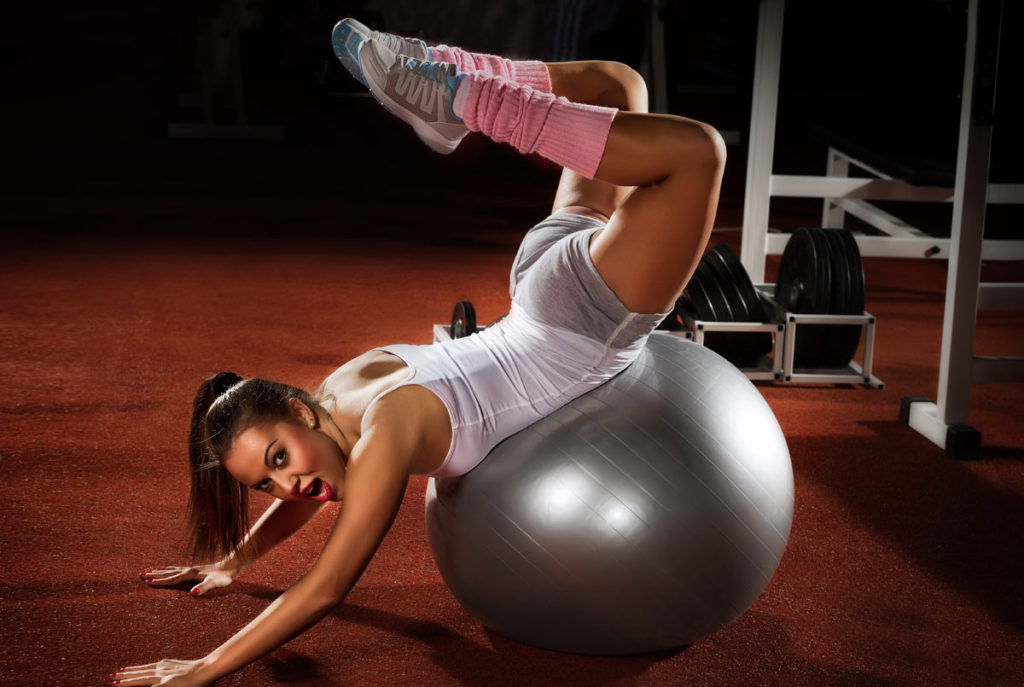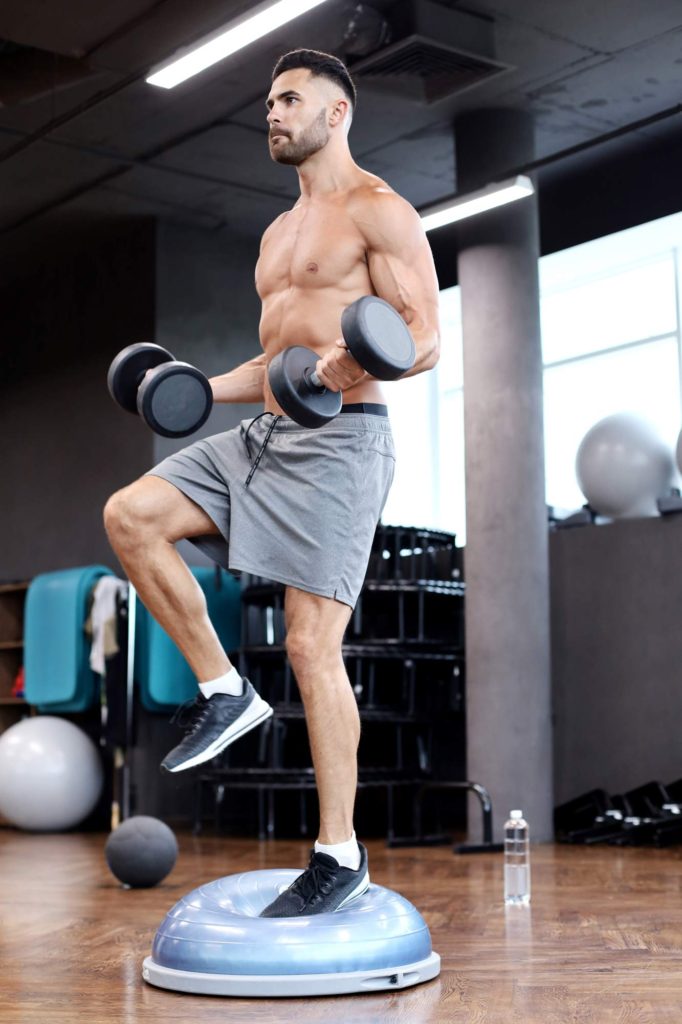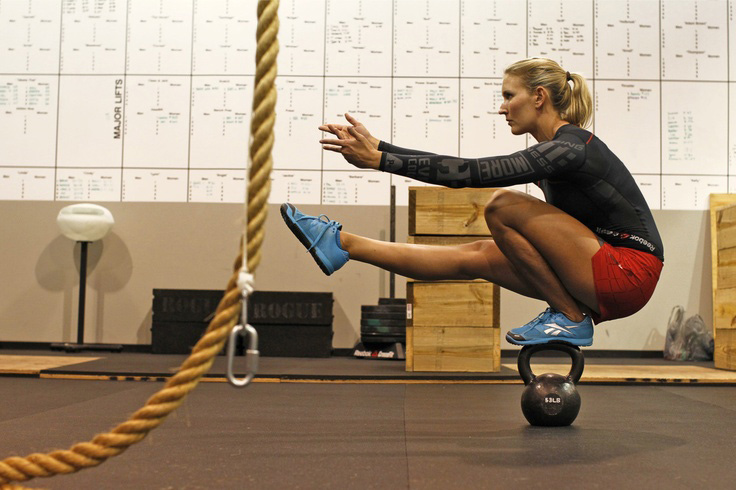Yeah, it’s hard to do a push-up with your hands and feet on medicine balls. And it’s impressive to do a one-legged squat on a kettlebell handle, or heavy squats on a balance (Swiss) ball. But are there concrete training benefits to any of this “stability training,” as it’s called? Or… is it just a load of (possibly macho) dumb, dangerous BS?
Like most things, the answer is “Yes. And YES.”
Stability training, or balance training as some call it, has seen a recent uptick in popularity in the past 15 years. You may have noticed that as gyms got more modern and added the kettlebells and sandbags, they added the bosu balls and TRX bands. You probably even saw trainers break out some tools with clients, or some overly filtered videos of impressive feats online.
But is any of it effective? What are the benefits of stability or balance training?
What is stability training?
This post may contain affiliate links. Please see my full disclosure here.
Stability training is performing exercises while on an unstable surface or in an unstable stance. Common ideas are, as I mention above, balance balls (Swiss balls), medicine balls, Bosu balls, etc.
However, instability is already at the core of how we move. The human body is never 100% stable. You can feel stable standing up, but you are working to hold yourself that way. (My 6-month-old sure has a hard time holding herself in a seated position.)
Also, no surface is 100% stable. That’s why people run or exercise in sand, which makes everything extra challenging. But even the way that your foot moves in your shoe provides some degree of instability.
A personal rant.
So that guy doing push-ups with his hands and feet on balance balls? That was a real thing. I was at the gym (back when I had a gym, pre-pandemic and all) and doing my regular but very focused and planned workouts that I do. It caught the attention of said balance ball guru, and he caught my eye like he wanted to say something.
Usually when this happens, it’s a fellow workout enthusiast with words of admiration. I finished my set, met his eyes, brushed aside my sweat and smiled, as if to say, “Yes?” I was expecting something like, “Wow, the way you pounded through those jump lunges while still getting height was impressive!”
But instead, he said to me, “I’d really love to see you incorporate more stability exercises.”
UGH.
Whenever someone says something like “I’d really like to see…” they better damn well be paid to say those words to me. Unsolicited advice is not always welcome, especially not from strangers, and especially not from this guy, doing tricks like a clown seal at a circus. (Yeah, I said “clown seal.” Fight me. I mean, you get the gist.)
If you’ve ever tried it, you know that it does make things harder. Okay, so that’s one point for it. But how much harder, and what does that “hardness” do for us? Does it give us results?
When it doesn’t work.

What is your goal, and does stability training give you benefits towards that goal?
Here’s the thing: If you want to get better at something, do that. Don’t do something else instead.
If you want to get better at the ukulele, don’t practice the accordion.
If you want to be better at pull-ups, practice pull-ups. No, not lat pull-downs, not push-ups—pull-ups. And if you want stronger legs, shoulders, whatever, doing exercises on a bosu ball won’t help you get stronger in that exercise. At least, not on that muscle group you’re targeting, and not when you’re not on the bosu ball (or whatever).
We know that to build muscle, you perform a motion that works the muscle to failure or close to it. The muscle breaks down, then repairs itself to do that motion better. So you do the exercise again, increasing the resistance, and repeat the process over and over so the muscle grows in size and strength.
If you’re balancing on a ball while lifting weight, your ability to lift that weight is significantly compromised because your body is trying to just keep you upright. Depending on the exercise, you might not even fully be activating the muscles you’re looking to target.
Also, if you’re struggling to keep upright, every rep you do will be slightly different, which impedes the whole point of repetition for growth.
Lastly, it’s just really dangerous. I mean, it depends on the exercise, but don’t put yourself in danger by lifting heavy weight with both feet on a balance ball or some sh*t.
And lastly again, the research doesn’t back it up.
When it does work
Just because Mr. Circus Clown Seal uses stability training the wrong way doesn’t mean there isn’t a place for it.
Stability training benefits you in… well, training stability.
I know. Shocker, right? It exercises your core and stabilizing muscles, improving your balance and agility. This makes you perform all tasks with more grace and efficiency, inside or outside the gym. It can also help you avoid injury, especially as you progress with your strength training.
How to use stability training for your stabilizing muscles.
That bosu ball? Try doing a plank with your hands on it, or your feet. Take it up a notch and try your hands or feet (not both) on a balance ball or medicine ball. Pull-ups are hard enough, but if you’re that much of a badass, try doing them on gymnastics rings.
Anything you do on an unstable surface, though, should be bodyweight.
Rehab, aging and function.
Stability training also has huge benefits in rehab or physical training. I have a bad ankle after I broke my leg 20 years ago and the cast seized up movement in that joint. So, standing on a bosu ball helps me build better balance in a pretty naturally unstable joint. It works the stabilizing muscles in my whole body, having to work around a stiff ankle. But it also works the smaller muscles and ligaments in the ankle itself.
When stability training does benefit weight lifting.

You’re probably doing stability training and didn’t realize it. You can be practicing stability training without using any of these tools.
Have you ever tried an exercise with free weights, then compared it with the machine that does the exact same movement? You probably found that the free weights were harder, or that you couldn’t lift as much weight. This is because the machines remove as much instability as possible. You’re not standing, you’re isolating the muscle group worked, and the machine has very limited movement.
With free weights, you have freedom to move your body and the weight in all planes. If you’re standing, you’re actually spending a small amount of energy to just keep yourself upright while performing the movement. Even seated, you have a lot more freedom.
Tools like kettlebells and sandbags have instability built into them, so your body constantly has to shift in order to accommodate the weight. Going back to the bicep curls, if you try them with kettlebells and dumbbells, you’ll see that the kettlebells are… wait for it… much harder.
Small changes in how you hold the weights, move the weights, or hold your body in relation to the weight can all give you some amount—albeit small—of instability. And these tiny changes help you understand your body moving in space as a real, functioning person.
These kinds of instability, however, are small enough that they don’t stand in the way of any and all strength improvements in the main muscle group being worked. They also help build a more functional strength. When you carry furniture, for instance, having some stability training will probably benefit you.
It also helps you if your goal is that task.

Yeah, I mean, if you’re joining the circus and you need to walk the tightrope while carrying a monkey, then it’s helpful. Or maybe you’re carrying a seal. A clown seal. Aaaaand, we’ve come full circle.
It might help if you want to impede your strength training.
Why would you want to do that? Bear with me.
It’s a sticky wicket to deal with the issue of “bulk” and women’s fitness. Why? Because there’s a lot of misinformation out there about it. Some trainers (ahem, you know who you are) even build a brand off this BS, and frankly, it pisses me off.
Because the message for so long has been that “muscles are masculine,” women are afraid to build any muscle. And then they started realizing it was healthy and attractive, but they used words like “tone” and phrases like “long, lean muscles” to—I guess—not scare women away from gaining muscle. But there is no difference between “toning” a muscle and building it. Muscles don’t build in different ways for “longer” muscles. You can’t make muscles longer unless you break your limbs and get surgery to elongate them (and yes, they can do that, but please don’t).
So I want to get the message out there as much as possible that women can build muscles without fear of getting too big. Because women won’t ever look like men unless they take hormones to do so. And also, it takes a lot of freaking work for anyone to build muscle, let alone someone who doesn’t want to and likely can’t.
However.
Yeah, however.
For a time I did traditional weightlifting. You know, three to five sets of 10-15 reps of each exercise, resting in between, etc.
And the thing is? It worked. I mean, it built muscle. And I also got bigger. I had bigger muscles than I do now because I was training in a way that is designed to build muscle.
And…it wasn’t my favorite for my body. (It also was pretty boring, but that’s just me.) Now, I wasn’t huge by any stretch of the imagination, and I was likely exaggerating my growth. But one of the reasons I love the way I train now is that it allows me to go all out while also limiting my muscle size.
Metabolic resistance training isn’t optimal for muscle growth or strength. It burns a lot of calories, builds muscle to a point, and keeps my cardiovascular system in optimal health (my heart rate is really low, I found out when I went into labor, because of this).
Likewise, if your goal is not just muscle growth, you enjoy bodyweight strength training exercises, and you’re not putting yourself in danger, some instability with strength training could be your ticket. For example:
- Push-ups with your feet on a balance ball
- Pistol squats on a bosu ball (if regular pistols are too easy for you)
- Bodyweight squats (or lightly weighted squats) on a bosu ball
- Pull ups or Aussie pull ups on rings or TRX bands
- Bent-over rows in an isometric single-leg deadlift
Notice that all of these stability training exercises are not with heavy weight.
The best way to reap the benefits of stability training.
In conclusion, you should use stability training to at least work your core and stabilizing muscles, but keep those exercises separate from any heavy weight lifting. The two can be best friends and stay in their own lanes.
If you’re doing a circuit, for instance, you can alternate the two. Try medicine ball mountain climbers and then military presses, rounding out with some push ups with your feet on the balance ball.
This way, you can segment each intention separately, and reap the benefits of both stability training and strength training.
And if you have a similar clown seal at your gym, do what I didn’t: Tell him to [ahem] off. With a big smile on your face.

